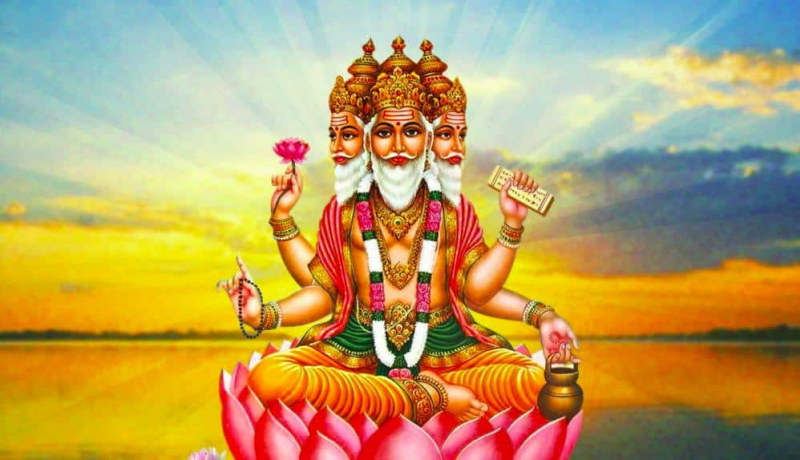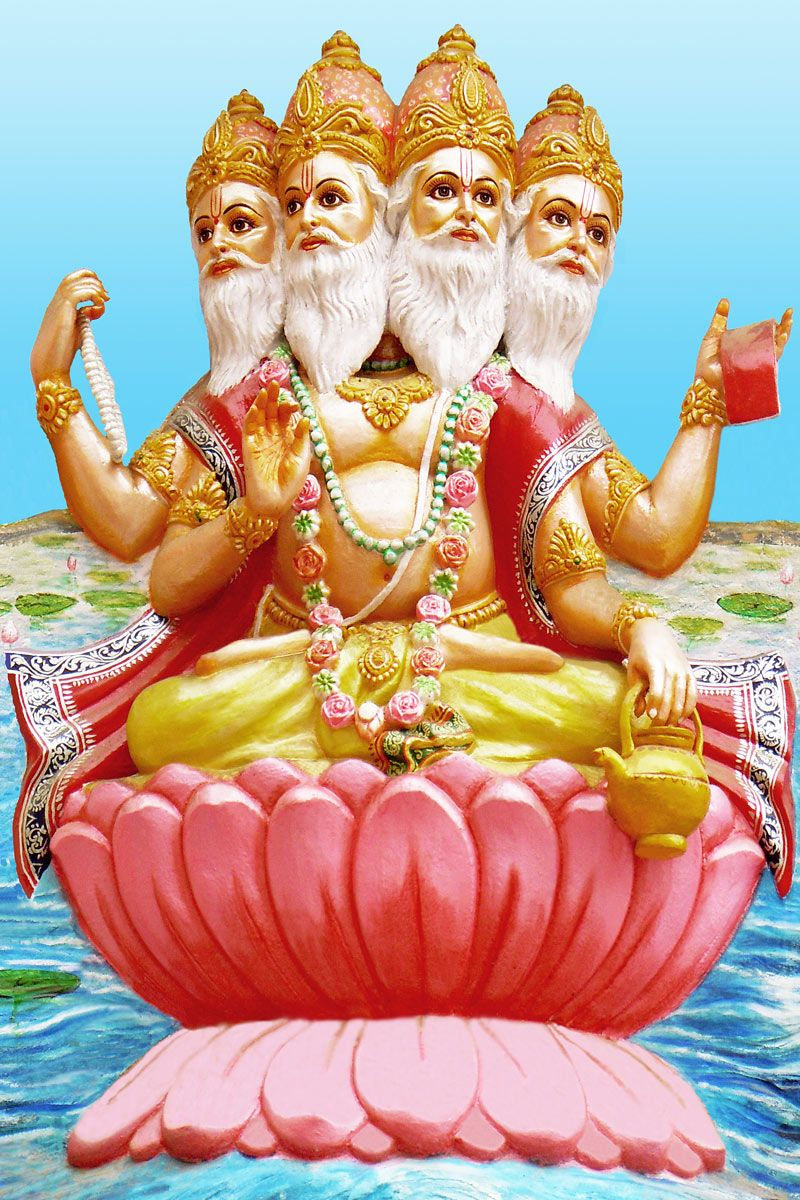Lord Brahma

Between around 500 BCE and 500 CE, Brahma was a prominent Hindu god who was gradually supplanted by Vishnu, Shiva, and the great Goddess (in her multiple aspects). Brahma, a Vedic creator god who adopted the name Prajapati, was hatched from a golden egg and created the earth and everything on it. Later tales claim that he emerged from a lotus that was sent forth from Vishnu's navel.
The theology of the Trimurti, which regards Vishnu, Shiva, and Brahma as three manifestations of the supreme unmanifested deity, demonstrates an attempt to reconcile the conflicting sectarian traditions by the middle of the first millennium CE. Although the Trimurti continued to play a significant role in both text and sculpture, Brahma had essentially lost his position as the supreme deity by the seventh century. Only a few temples are dedicated to Brahma now, and no group practices his devotion exclusively. However, a statue of Brahma can be found in the majority of temples honoring Shiva or Vishnu.
Brahma is sometimes pictured with four faces, signifying his expansive four-square capacity. He is typically depicted as having four arms and holding a book, prayer beads, a bow, and an alms bowl. He might be perched on a lotus throne, a goose, or both. He is typically accompanied by Savitri and Sarasvati, who are examples of devotion, music, and learning, respectively.











